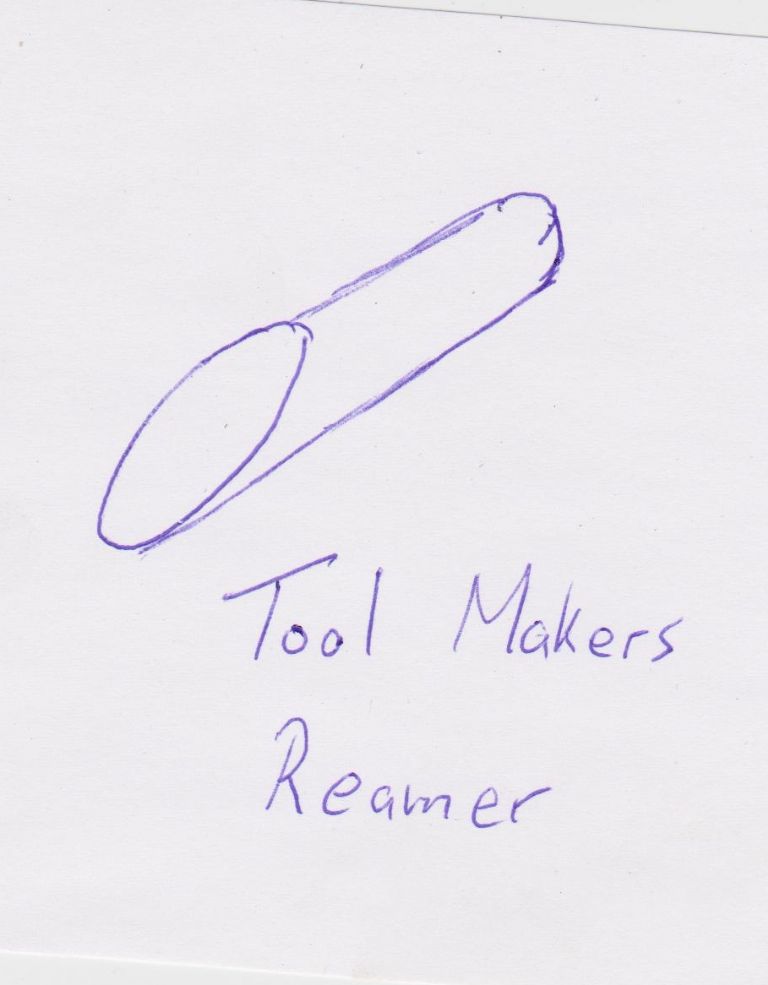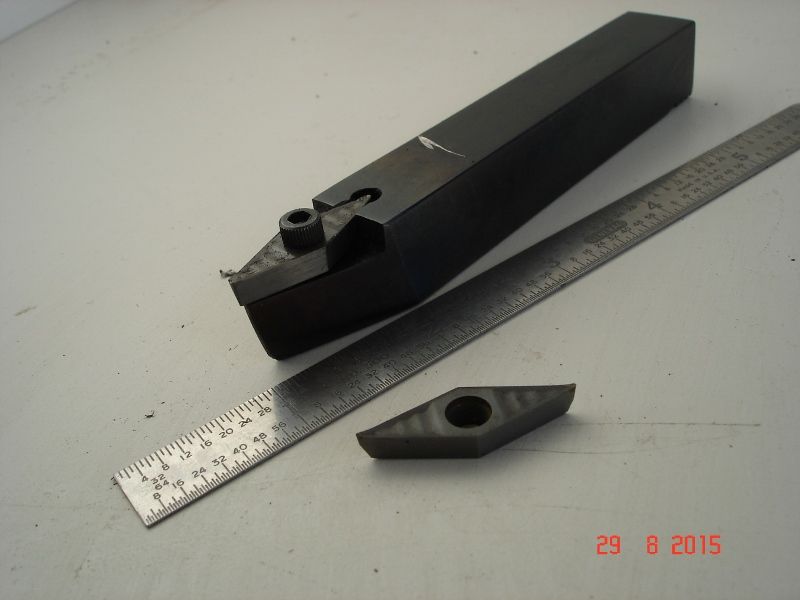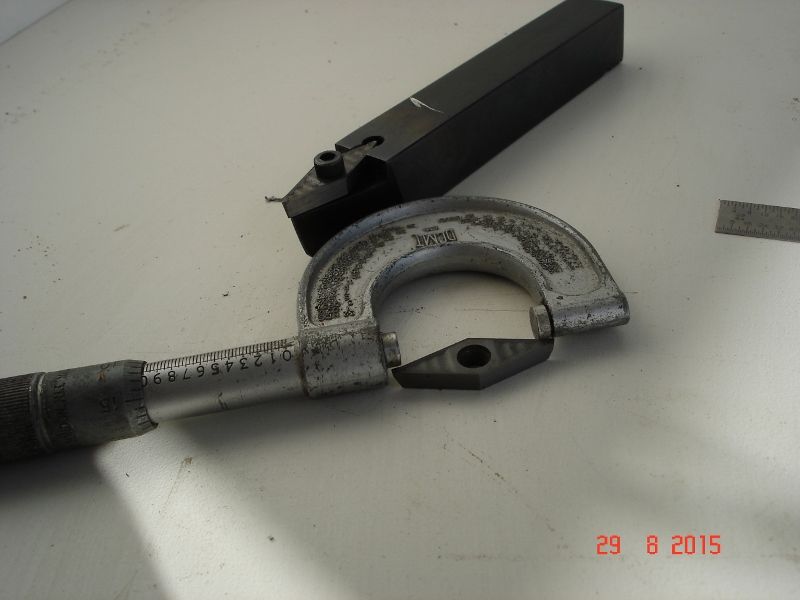Posted by Brian John on 01/10/2015 10:53:53:
I bought an aluminium cutting wheel today ; it is twice as thick as the steel cutting wheels. I am not sure why that is but I will use it next time I have to cut aluminium or brass.
I seem to be using mostly the RH cutting tool since I bought the lathe. I am using the carbide tip tools (not indexable) for roughing cuts and using freshly sharpened HSS tools for taking finishing cuts. This is giving a very good result. Hopper's cutting tools are VERY sharp !
What sort of results should I expect with indexable carbide tips such as these ?
**LINK**
**LINK**
The 2nd link types are fine Brian. I use them but on the 10mm / 3/8" holders. You don't want to buy that set though. Look for ones that come with a torx wrench. The tip fixing screws are far to fine for a modern poorly fitting hex key and the keys round over in no time at all. I would suggest 10mm holders too if they can fit your lathe but from the spec you would need to buy a new tool holder. The one that comes with the lathe seems to be aimed at 5/16in tooling but an odd metric equivalent that comes out at 0.309" +0 -0.012".
The tips on them are old hat though now. You should find a source of tips like these to replace them with at some point.
**LINK**
The triangular tips can be used to work up to and finish shoulders – not so the square ones. The rad on the tip is pretty small so the shoulder can be relived by plunging the tool in a little.
The same style for stainless finishing works well on all materials too but those are coated and the finish does fall off when the coating wears. I intend to try the micro polished aluminium ones on other materials and don't see what they shouldn't work out. Not done yet as I am in a no more work phase until I have completed a very thorough clear out and tidy up. There is some brass work in my photo album done with the stainless ones and no polishing etc. Also the same tip on silver steel showing micro tearing that would polish out very easily. The marks are only a couple of micron deep. It's pretty junky silver steel. The place I bought it off where getting rid of it.
I've found that a 60 grit green wheel is fine for braised tip carbide tools if the tool is moved side to side to finish off. I don't use these much now but did use them a lot. I have green grit on one wheel and a medium grit ordinary wheel on the other for hss and also relieving the tool steel under the brazed tip carbide tools when these were reground.
John
–
marko veic.





 All I'll add to that is ain't t weird that something that is sold for a specific purpose works better than some alternatives – or is it? I have used motor oil including synthetic etc in the past. I even tried EP gear oil once but the smell put me right off.
All I'll add to that is ain't t weird that something that is sold for a specific purpose works better than some alternatives – or is it? I have used motor oil including synthetic etc in the past. I even tried EP gear oil once but the smell put me right off.

